On June 12, Chesapeake boaters Brigid Flattery and Wayne Barnes completed their Great Loop adventure, a circumnavigation of the Eastern US and part of Canada, and crossed their wake one year and one week after departing from their home slip on the Patuxent River on June 3, 2023. Here they share with PropTalk readers highlights of the journey, how it came about, and advice for would-be Loopers.
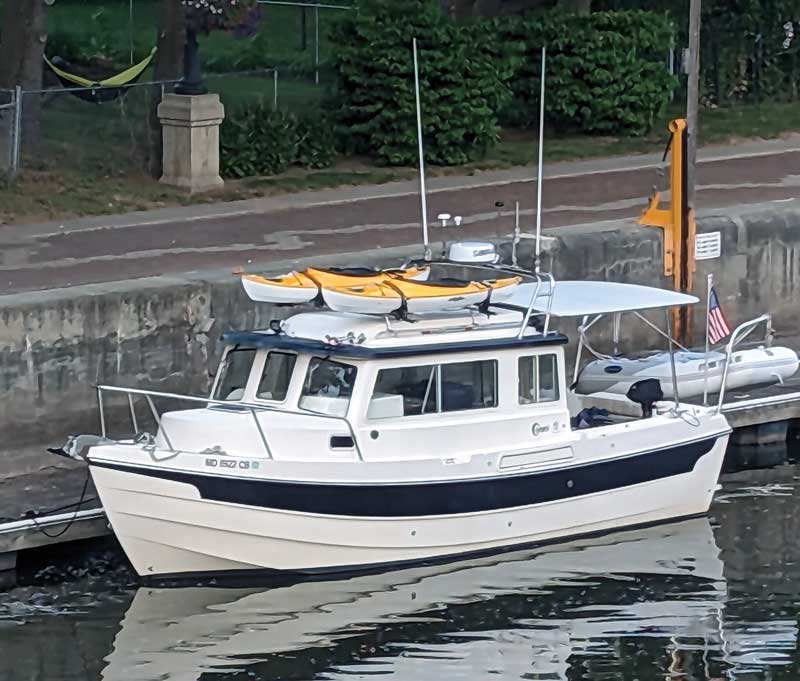
How did your Great Loop dream begin?
Wayne: I read a magazine article about the Loop and thought it sounded like a great way to travel. I am happy to be interviewed and participate in PropTalk because this is exactly the type of article that inspired us to do the Loop.
Brigid: When Wayne told me about the Loop, I thought it would be a wonderful way to see Canada and the United States.
Did you have a boating background?
Wayne: As a child, I grew up with small power and sailboats. My first “adult” boat was Vivire, a 38-foot sailboat purchased in 1995. While we mostly sail her in the Chesapeake Bay, we took one longer trip to the Western Caribbean and back in 2001 as part of our marriage celebration.
Brigid: I have always loved being on the water. My dad had a small Flying Dutchman (sailboat) that he would take my sisters and me out on growing up.
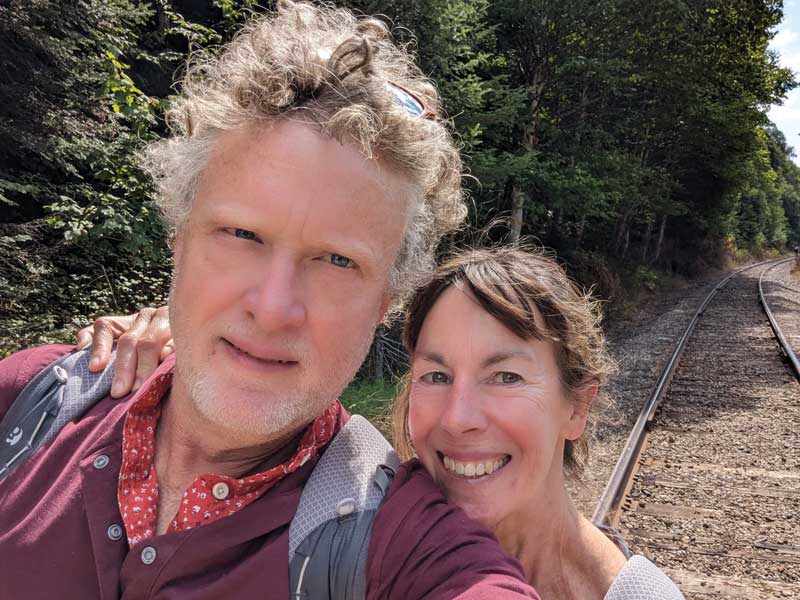
Tell us about your boats.
Wayne: We purchased Penguin, a 2008 C-Dory Venture 29, specifically to complete the Loop after we determined that Vivire, our full-keel cruising ketch with a five-foot draft, a 55-foot air-draft, and twin masts wasn’t suited to the Loop (insert wink). We took delivery in September 2020 on the Erie Canal near Rochester and brought her home to the Chesapeake to upgrade the systems before we left.
Penguin, at 29 feet, is a small boat compared to many on the Loop, but for us her size was an advantage. A smaller vessel enabled us to get to, get through, and fit in places that a larger boat could not. Penguin has a shallow draft, less than 11 feet of air draft, and can easily be handled by two people. Her low air draft was advantageous for getting under bridges on the inland waterways of the Loop.
Of course, a smaller boat’s advantages must be weighed against living in a small space together for an extended period of time. For us it wasn’t an issue.
Brigid: Penguin’s ability to go under most bridges and through shallow areas of the Loop played into looking for the right boat, but I fell in love with Penguin because she could be our “tiny home.” I love all the windows that help you feel as if you are outside while still being protected from the sun and weather.
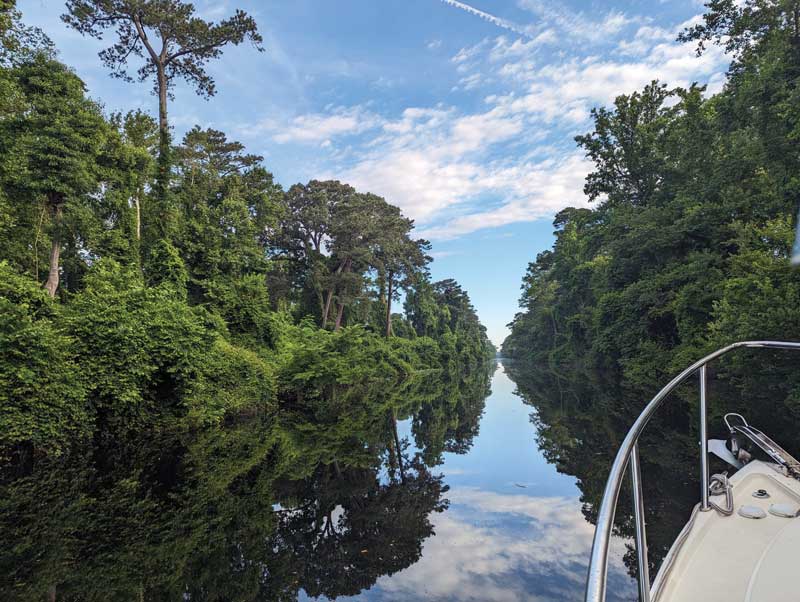
What route did you take?
Brigid: We went the Canadian route through Lake Champlain, crisscrossed Lake Michigan after Leland to see Wisconsin from Door County to Racine and then back to the Michigan side at Grand Haven, travelled through Chicago to the Mississippi River, then over to the Tenn-Tom and Tom Bigby River. We side tripped to Knoxville before travelling through Alabama and going west to New Orleans before visiting Florida and the Keys. We took the Intracoastal home to the Bay.
Wayne: We took side trips to Lake Superior, Dry Tortugas, Saint Johns River, and Albemarle Loop.
Favorite Spot/Best Memories
Wayne: A very incomplete list: Canada’s Heritage Canals was a hands-on journey through a museum of the 19th century; Listening to Greg Koabel’s “The Nations of Canada” podcast while traveling through the region (New York, New Hampshire, Quebec, Ontario, and the Great Lakes) gave us lots of information to understand and appreciate our surroundings; The barren, rocky terrain of Georgian Bay was fascinating because it was so different than any place we’ve ever boated.
Brigid: I loved all our side trips, especially Quebec, New Orleans, and the St. Johns River—and also the peacefulness of being on the water and surrounded by nature. Many of my best memories are too big to have been captured in a photo and are hard to describe. I do remember clearly that toward the end of the trip a pod of dolphins in the Lower Bay was playing and swimming alongside our boat, seemingly welcoming us home.
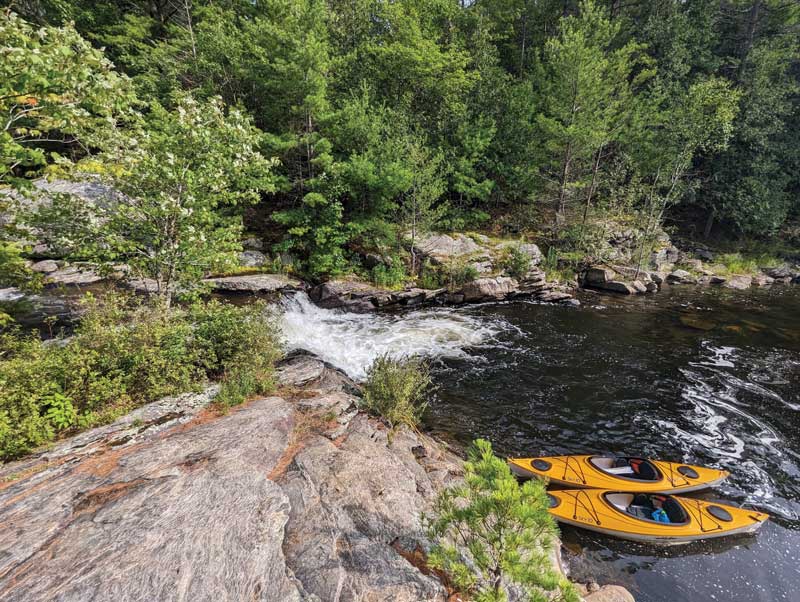
What surprised you or would surprise someone who isn’t familiar with the Loop?
Wayne: I was surprised by how accessible the trip is. The required money and skill seem nominal relative to the adventure.
Brigid: We found it challenging to plan for having mail delivered and for leaving the boat to travel home, because it was so difficult to know where you will be more than a few days ahead of time, given that the weather can change your travel timeline.
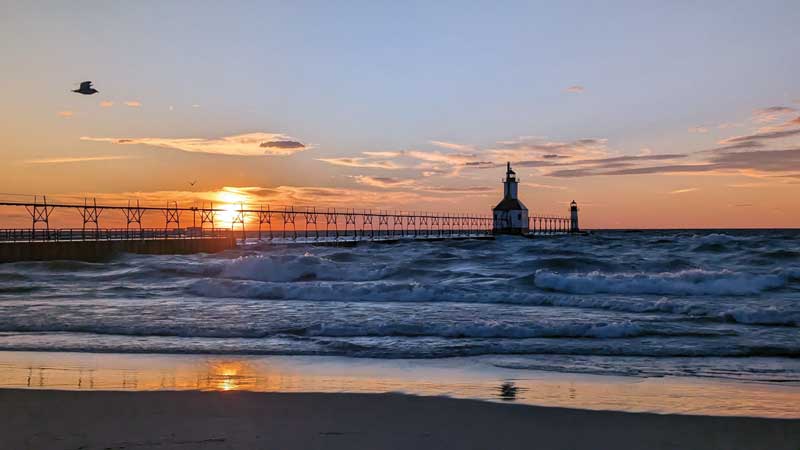
Advice for boaters dreaming about doing the Loop?
Wayne: Spend time gaining experience with your boat and its systems before starting. Weekend or weeklong cruises may reveal issues that can be addressed while close to home. The more familiar you are with the boat the better off you’ll be, especially in terms of the electrical and mechanical systems. You’ll be running the boat hard, sometimes five to six hours or 50 miles per day.
Preferably, boat mechanics will not be relatively new to you. There are an awful lot of places along the way where services are hard to come by, and if they are available, the service providers are overloaded with customers, although they do try their best to get cruisers on their way.
Don’t rule out a small boat; on several occasions, our small boat provided us greater access to locations, services, and experiences.
We added AIS about halfway through the trip and appreciated having it around commercial traffic.
Our most used references were the Waterway Guide, America’s Great Loop Cruising Association (AGLCA) user-generated content (harbor guides, region guides), and AGLCA forums (both current and historic).
We had tons of time for podcasts and audiobooks and enjoyed listening to content related to the area we were cruising.

Brigid: Fluidity is part of the trip. We chose not to set specific plans. When we did try to make plans, we usually ended up changing them anyway. Everyone’s comfort with weather is different, and each boat must plan accordingly. Additionally, there are times when you have to wait for locks to open, which can also add uncertainty to timelines.
We were lucky that Wayne was able to “MacGyver” the few boat issues that came up during our trip, often in remote places, which enabled us to continue on our journey.
You’ve just crossed your wake! How does it feel?
Wayne: I’m excited we accomplished the goal with enough enthusiasm for cruising to be researching the next adventure—perhaps taking the inside passage to Alaska.
Brigid: I am so thrilled that we did it! I am very thankful for the friendliness and sharing spirit we found in all the waterside communities and among our fellow boaters we met along the way. I enjoyed almost everything and am sure we will cherish our memories forever.